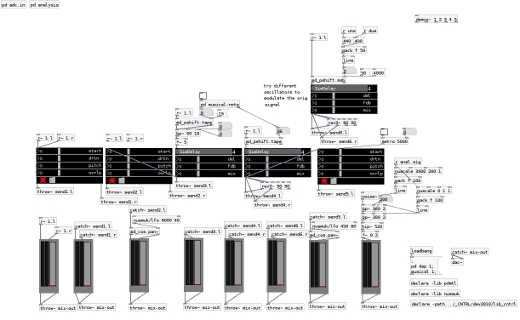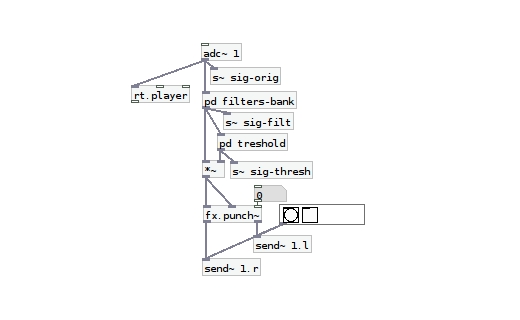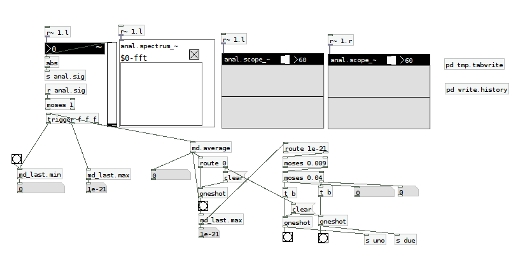Pure Data MMG signal processing system early alpha
The hardware prototype has almost reached a good degree of stability and efficiency, so I’m now dedicating much more time to the development of the MMG signal processing system in Pure Data. How do I want the body to sound?
First, I coded a real time granulator and some simple delay lines to be applied to the MMG audio signal captured from the body.
Then I added a rough channel strip to manage up to 5 different processing chains.
Excuse the messy patching style, but this is just an early exploration…
Click to enlarge.
However, once I started playing around with it, I soon realized that the original MMG signal coming from the hardware needed to be “cleaned up” before being actually useful. That’s why I added a subpatch dedicated to the filtering of unneeded frequencies and enhancement of the meaningful ones; at the same time I thought about a threshold process, which could enable Pure Data to understand whether the incoming signal is actually generated by voluntary muscle contractions or it’s a non-voluntary movement or a background noise. This way gesture results far more interrelated to the processed sound.
Eventually, I needed a quick and reliable visual feedback to help me analysing the MMG signal in real time. This subpatch includes a FFT spectrum analysis module and a simple real time spectrogram borrowed from the PDMTL lib.
Click to enlarge.
I’m going to experiment with such system and when it will reach a good degree of expressiveness I’ll record some live audio and post it here.




